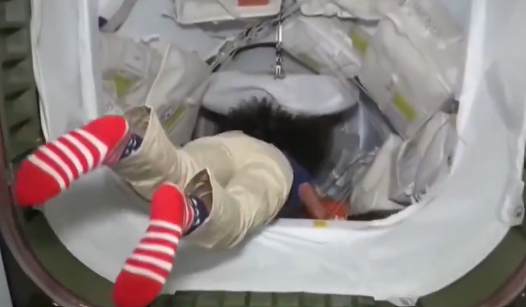Space junk can cause absolute panic on the ISS. For good reason
Astronauts on the International Space Station (ISS) recently sought refuge in the attached Boeing Starliner spacecraft due to a cloud of debris from a defunct Russian satellite. On June 27, shortly after 9 p.m. EDT, the ISS crew, which includes astronauts Butch Wilmore and Suni Williams from the Starliner mission, sheltered for approximately an hour as fragments from the decommissioned Resurs-P1 Russian Earth observation satellite passed close by.
The incident occurred when the satellite, inactive since 2022, disintegrated into over 100 pieces near the ISS on June 26. NASA, using updates posted on the social platform X, indicated that Mission Control monitored the debris’ trajectory closely. After ensuring the area was clear, they gave the all-clear for the crew to return to their regular activities within the station.
We pray to the Almighty for the safe arrival of Boeing’s Starliner capsule’s first crewed mission in earth with the astronauts Sunita Williams and Wilmore at the earliest immediately after resolving any technical issues there with the spacecraft. #ISS #NASA pic.twitter.com/6WisAudv2W
— Nirmalendu Paul (@Nirmalendu88696) June 27, 2024
The detection of the breakup was first reported by LeoLabs, a company that tracks orbital debris, which identified the event in Low Earth Orbit on June 26. The U.S. Space Command confirmed that the debris posed “no immediate threats” to other satellites, although the cause of the satellite’s disintegration is still under investigation.
This episode shows how the broader issue of space debris, which poses increasing risks to both manned space missions and unmanned satellites. Currently, space agencies monitor over 30,000 larger debris pieces orbiting Earth, with countless smaller fragments eluding detection. Various cleanup solutions have been proposed, including the use of nets, robotic arms, or deploying large tethers from spacecraft to collect debris.
#Gravitas | Starliner capsule problems delay astronaut returns from ISS.
Propulsion issues may force the use of #SpaceX‘s crew Dragon.@MollyGambhir tells you more
Watch more on https://t.co/AXC5qRuO3J #SpaceNews #NASANews pic.twitter.com/8HGGNwIdMu
— WION (@WIONews) June 27, 2024
The event also highlights ongoing challenges with NASA and Boeing’s Starliner mission. Astronauts Wilmore and Williams were supposed to return to Earth on June 13 after a week-long mission but have been stranded on the ISS due to technical problems. The Starliner encountered issues including helium leaks in its thruster system and failures in several of its reaction-control system thrusters. With a limited fuel reserve for maintaining orbit, the spacecraft can remain docked only up to 45 days, putting pressure on engineers to resolve the issues for a timely and safe return.
Problems with Boeing’s Starliner capsule, still docked at the ISS, have upended the original plans for its return of its two astronauts to Earth, as last-minute fixes and tests draw out a mission crucial to the future of Boeing’s space division.https://t.co/hKvqLr5jXZ
— The Hindu (@the_hindu) June 25, 2024
NASA’s commitment to maintaining the ISS continues, with operational plans extending through at least 2030. As part of the long-term strategy, the agency has arranged for the eventual safe deorbiting of the ISS into the Earth’s atmosphere, culminating in an oceanic reentry. Earlier this week, NASA awarded SpaceX a contract potentially worth $843 million to develop a vehicle capable of safely deorbiting the aging station, ensuring that the decommissioning process minimizes risks to both the station and terrestrial environments. It’s Elon Musk’s job when the time to end it comes.
Key Points:
i. Astronauts on the ISS took shelter in the Boeing Starliner due to debris from the disintegration of the defunct Russian Resurs-P1 satellite.
ii. The incident, occurring on June 27, lasted about an hour before the crew was cleared to resume normal operations.
iii. The breakup of the Resurs-P1 satellite, inactive since 2022, added over 100 pieces of debris to the already problematic space junk orbiting Earth.
iv. NASA and Boeing face ongoing challenges with the Starliner mission, including technical issues that have stranded astronauts Butch Wilmore and Suni Williams on the ISS.
v. NASA plans to keep the ISS operational through 2030, with future plans for a safe deorbiting process involving a recently awarded contract to SpaceX.
Conner T – Reprinted with permission of Whatfinger News



